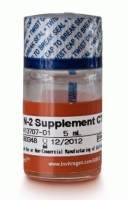Saporin Suicide Gene Therapy
互联网
823
New genes useful in suicide gene therapy are those encoding toxins such as plant ribosome-inactivating proteins (RIPs), which can irreversibly block protein synthesis, triggering apoptotic cell death. Plasmids expressing a cytosolic saporin (SAP) gene from common soapwort (Saponaria officinalis ) are generated by placing the region encoding the mature plant toxin under the control of strong viral promoters and may be placed under tumor-specific promoters. The ability of the resulting constructs to inhibit protein synthesis is tested in cultured tumor cells co-transfected with a luciferase reporter gene. SAP expression driven by the cytomegalovirus (CMV) promoter (pCI-SAP) demonstrates that only 10 ng of plasmid DNA per 1.6 � 104 B16 melanoma cells drastically reduces luciferase reporter activity to 18% of that in control cells (1) . Direct intratumoral injections are performed in an aggressive melanoma model. B16 melanoma-bearing mice injected with pCI-SAP complexed with lipofectamine or N -(2,3-dioleoyloxy-1-propyl) trimethylammonium methyl sulfate (DOTAP) show a noteworthy attenuation in tumor growth, and this effect is significantly augmented by repeated administrations of the DNA complexes. Here, we describe in detail this cost-effective and safe suicide gene approach.









